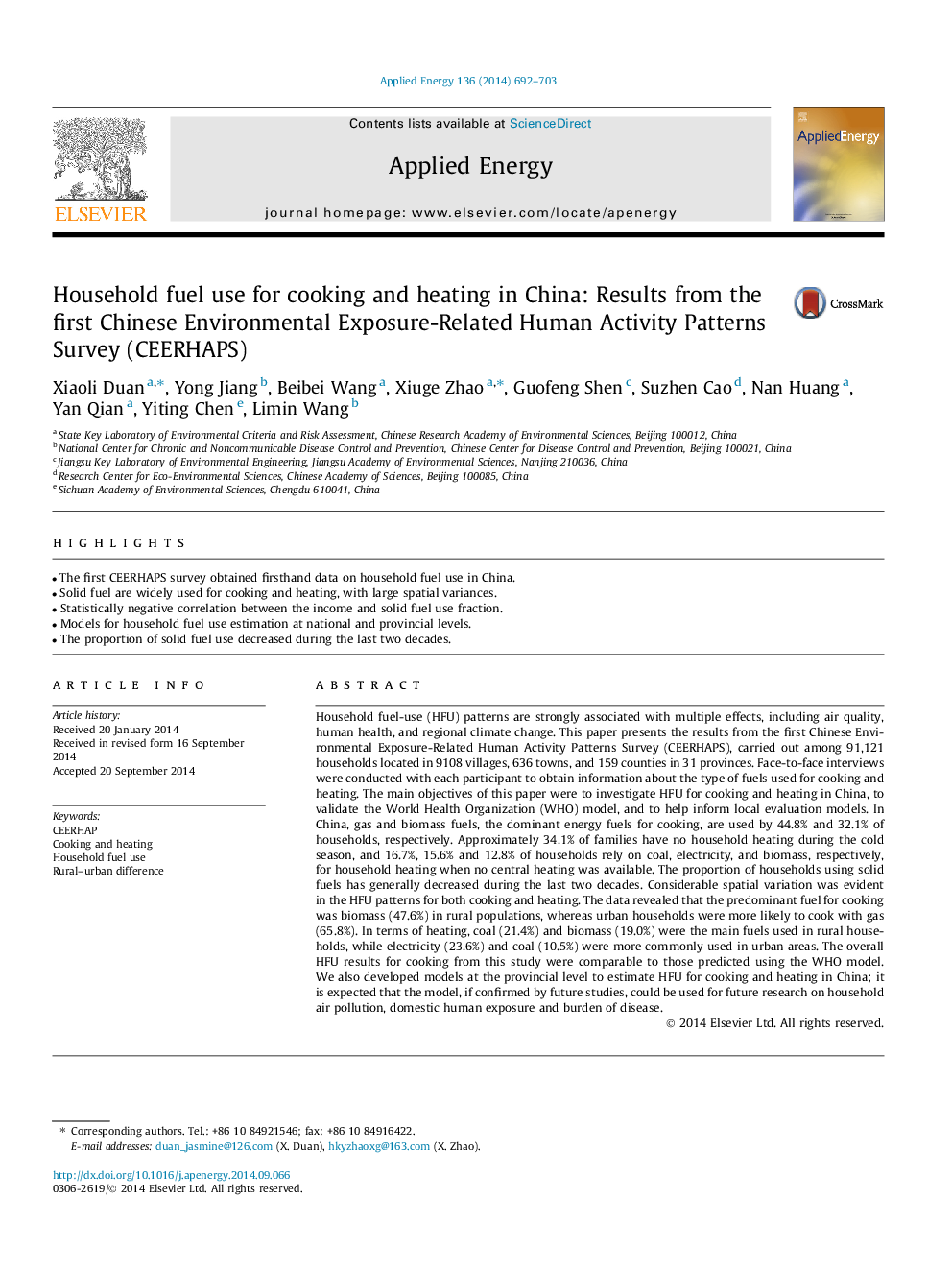| Article ID | Journal | Published Year | Pages | File Type |
|---|---|---|---|---|
| 6688881 | Applied Energy | 2014 | 12 Pages |
Abstract
Household fuel-use (HFU) patterns are strongly associated with multiple effects, including air quality, human health, and regional climate change. This paper presents the results from the first Chinese Environmental Exposure-Related Human Activity Patterns Survey (CEERHAPS), carried out among 91,121 households located in 9108 villages, 636 towns, and 159 counties in 31 provinces. Face-to-face interviews were conducted with each participant to obtain information about the type of fuels used for cooking and heating. The main objectives of this paper were to investigate HFU for cooking and heating in China, to validate the World Health Organization (WHO) model, and to help inform local evaluation models. In China, gas and biomass fuels, the dominant energy fuels for cooking, are used by 44.8% and 32.1% of households, respectively. Approximately 34.1% of families have no household heating during the cold season, and 16.7%, 15.6% and 12.8% of households rely on coal, electricity, and biomass, respectively, for household heating when no central heating was available. The proportion of households using solid fuels has generally decreased during the last two decades. Considerable spatial variation was evident in the HFU patterns for both cooking and heating. The data revealed that the predominant fuel for cooking was biomass (47.6%) in rural populations, whereas urban households were more likely to cook with gas (65.8%). In terms of heating, coal (21.4%) and biomass (19.0%) were the main fuels used in rural households, while electricity (23.6%) and coal (10.5%) were more commonly used in urban areas. The overall HFU results for cooking from this study were comparable to those predicted using the WHO model. We also developed models at the provincial level to estimate HFU for cooking and heating in China; it is expected that the model, if confirmed by future studies, could be used for future research on household air pollution, domestic human exposure and burden of disease.
Keywords
Related Topics
Physical Sciences and Engineering
Energy
Energy Engineering and Power Technology
Authors
Xiaoli Duan, Yong Jiang, Beibei Wang, Xiuge Zhao, Guofeng Shen, Suzhen Cao, Nan Huang, Yan Qian, Yiting Chen, Limin Wang,
